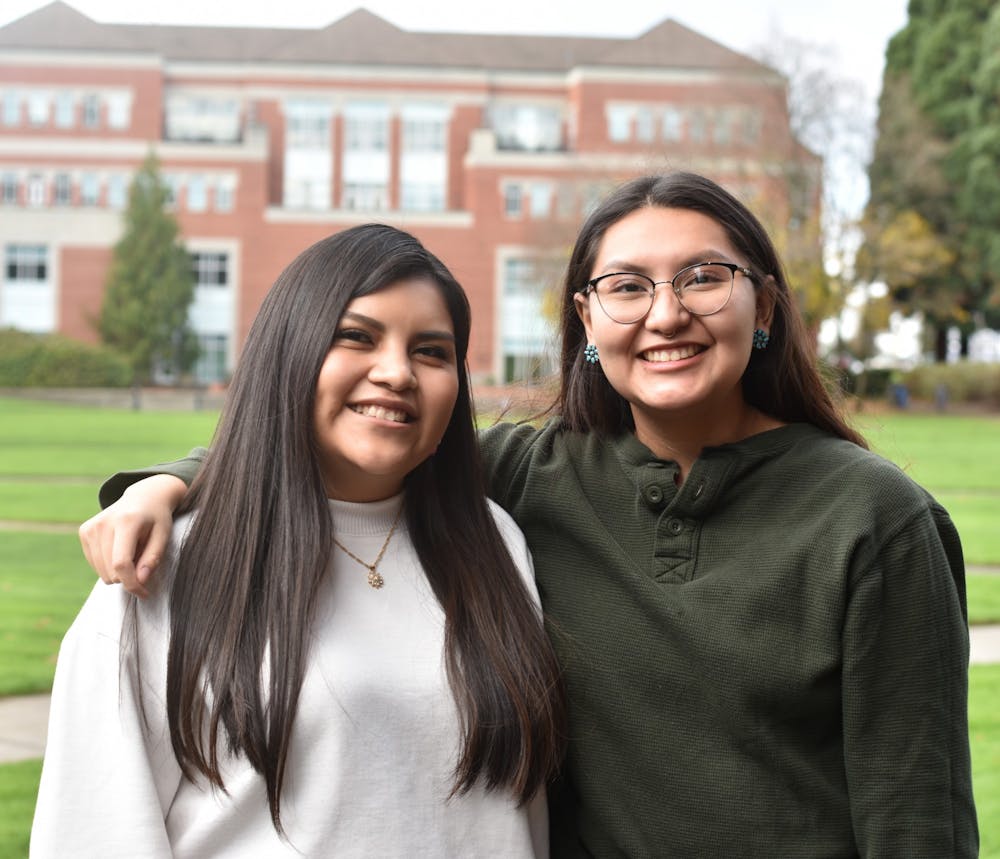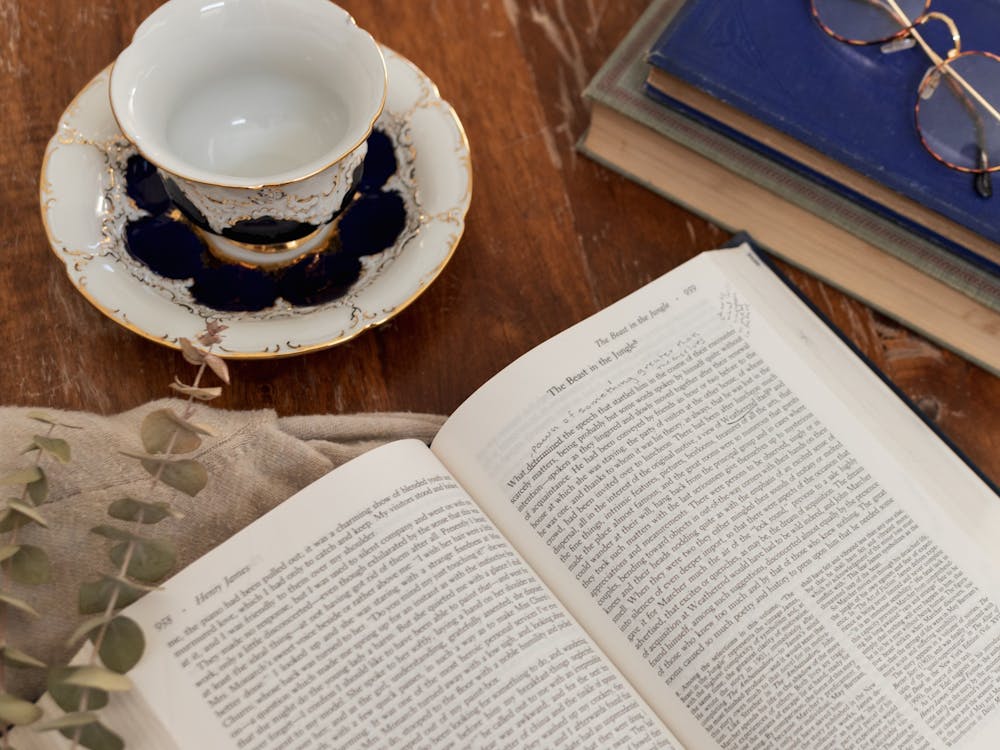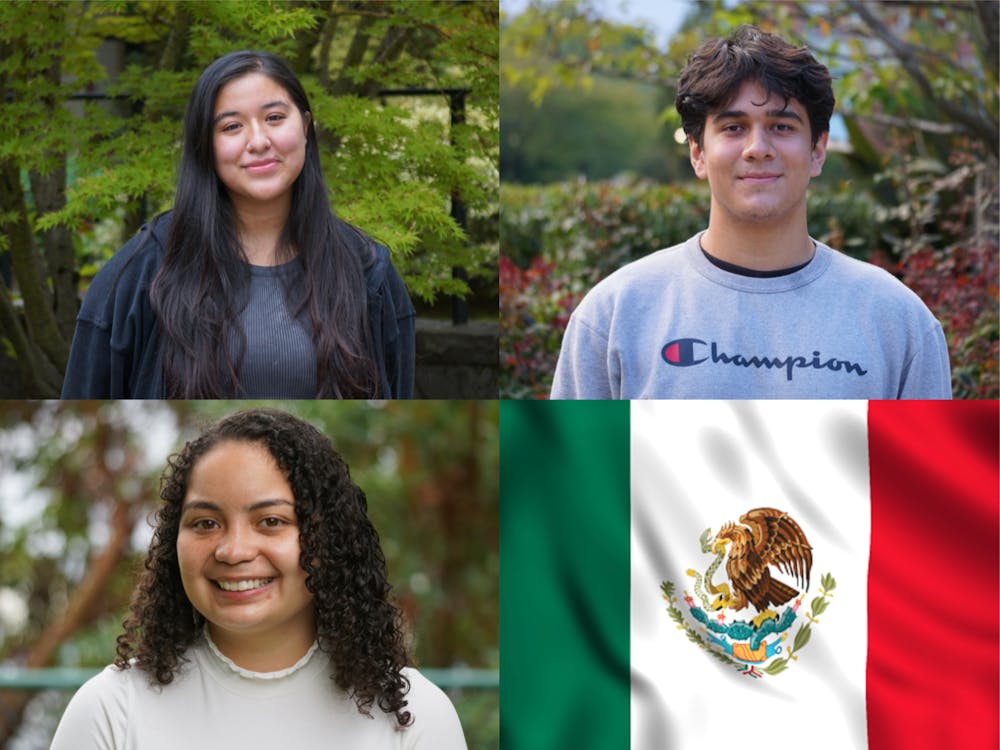"I didn’t know that Native people were still alive,” is a comment that many young Native Americans have been faced with many times throughout their lives.
Attending a predominantly white institution life as a Native American student has proven to be both lonely and empowering, with less than 1% of UP students identifying as Native American in 2021 — making them the least represented race/ethnicity on campus. This issue isn’t new — UP has seen limited to no change in Native enrollment percentage since at least 2012.
Below are the stories of four Native American women attending UP:
Nia Moquino
Junior
Psychology major, chemistry minor
She/her/hers

Nia Moquino grew up in Tesuque Pueblo, and Zia Pueblo, New Mexico as a part of the Native American culture and traditions. According to Moquino, this is what shaped her into who she is today.
As the oldest child with two younger sisters, family is an important part of Moquino’s life and culture. She wants to be a mentor to other young Natives in her life.
“I want to be a role model to younger Native children to keep going in their education to push for their dreams and their goals and be whatever they want to be,” Moquino said. “Because there's not a lot of representation for Native people, and I have a lot of younger cousins, nieces and nephews that don't have those role models, so I want to be that for them.”
Growing up in a highly Native community, Moquino felt connected to her heritage, yet she didn’t feel that portrayed in popular media — this is something she is thrilled to see improve since her childhood.
“There is some representation that has been growing for Native people, especially with the new show, Res Dogs,” Moquino said. “There's a lot more representation in that, but growing up I never had that.”

In television, Native representation is virtually nonexistent — varying by content, representation was found to be between 0 and 0.6%, with Native women being less likely to be represented. When Native Americans are represented in the media, they are generally portrayed as historical figures. In the rare instance that they are shown as modern members of society, they are often associated with addiction, poverty or a lack of formal education, leading to an increase in negative media portrayal and stereotypes.
“Being Native has pushed me and motivated me to do the best I can,” Moquino said. “Because although I'm the only Native person everywhere I go, it allows me to show that Native people aren't the typical stereotype and that I can change those ideas and show that Native people are strong and resilient and educated.”
However, the lack of representation for Native Americans isn’t limited to popular media, but can also be seen in the education system. According to the Smithsonian Magazine, most students across the U.S. don’t get comprehensive, thoughtful or even accurate education in Native history and culture. A 2015 study by researchers at Pennsylvania State University found that 87% of content taught about Natives includes only pre-1900 context.
“I think there needs to be a lot more education from the Native side of history,” Moquino said. “When you're little you learn about the other side of history and you never know what happened to the Native people and their points of view, which then affects the ratio of people who think that there's not any Native people today. Sometimes when I say ‘I’m Native’ people say ‘oh, I didn’t know Native people were still alive.’”
Given the lack of Native representation on campus, Moquino has struggled to feel a sense of community at UP.
“I want the UP community to know that Native people are still here — still thriving,” Moqunio said. “Through all the things we've gone through we are resilient. There's a lot to learn about Native people, it’s important that we start sharing our voices and speaking up, showing how amazing we are.”
Kamia Leano
Sophomore
Marketing major
She/her/hers
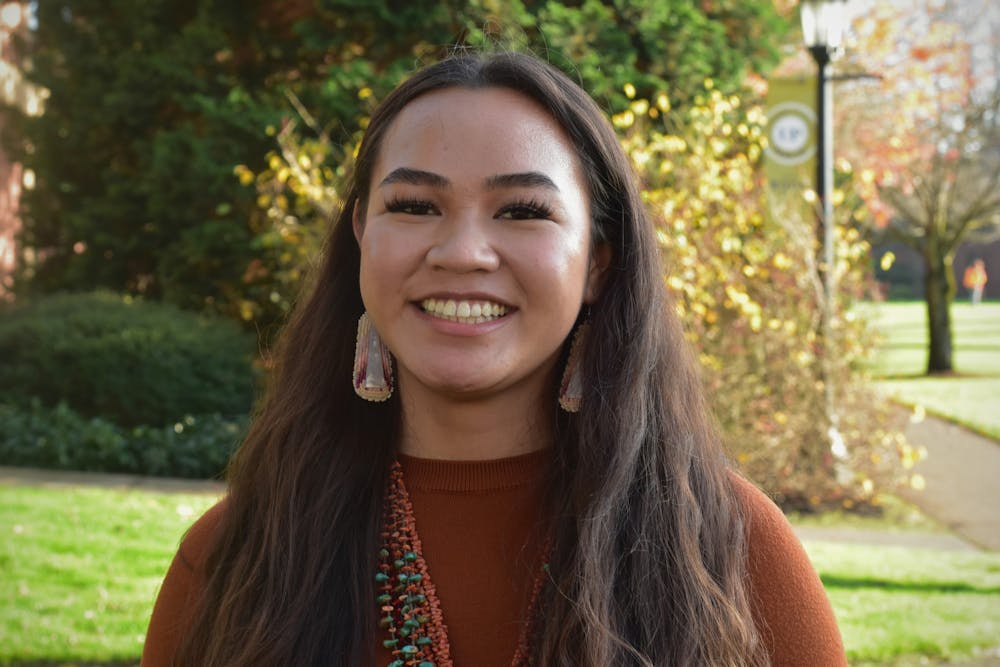
Kamia Leano grew up on a Navajo Nation Reservation in Deer Springs, Arizona. From a young age Leano was taught by her family members – especially the women in her life – how to connect with the Earth.
“Being Native means to take care of the land, to take care of ourselves, and our people,” Leano said. “I feel like my culture has played a big role in how I view the world, my groundedness, my humility, and my presence.”
Being half Native and half Samoan, Leano’s culture greatly values honoring her ancestors and considers what it means to live a meaningful life. Native culture is known for respecting nature above all else. The concept is significantly intertwined with the society’s beliefs regarding spirituality, both of which act as vital defining aspects of their understanding and way of life.
“To realize why I'm here and how much it took for me to just be here to be alive,” Leano said. “All my ancestors and how much they had to go through for me to be here.”
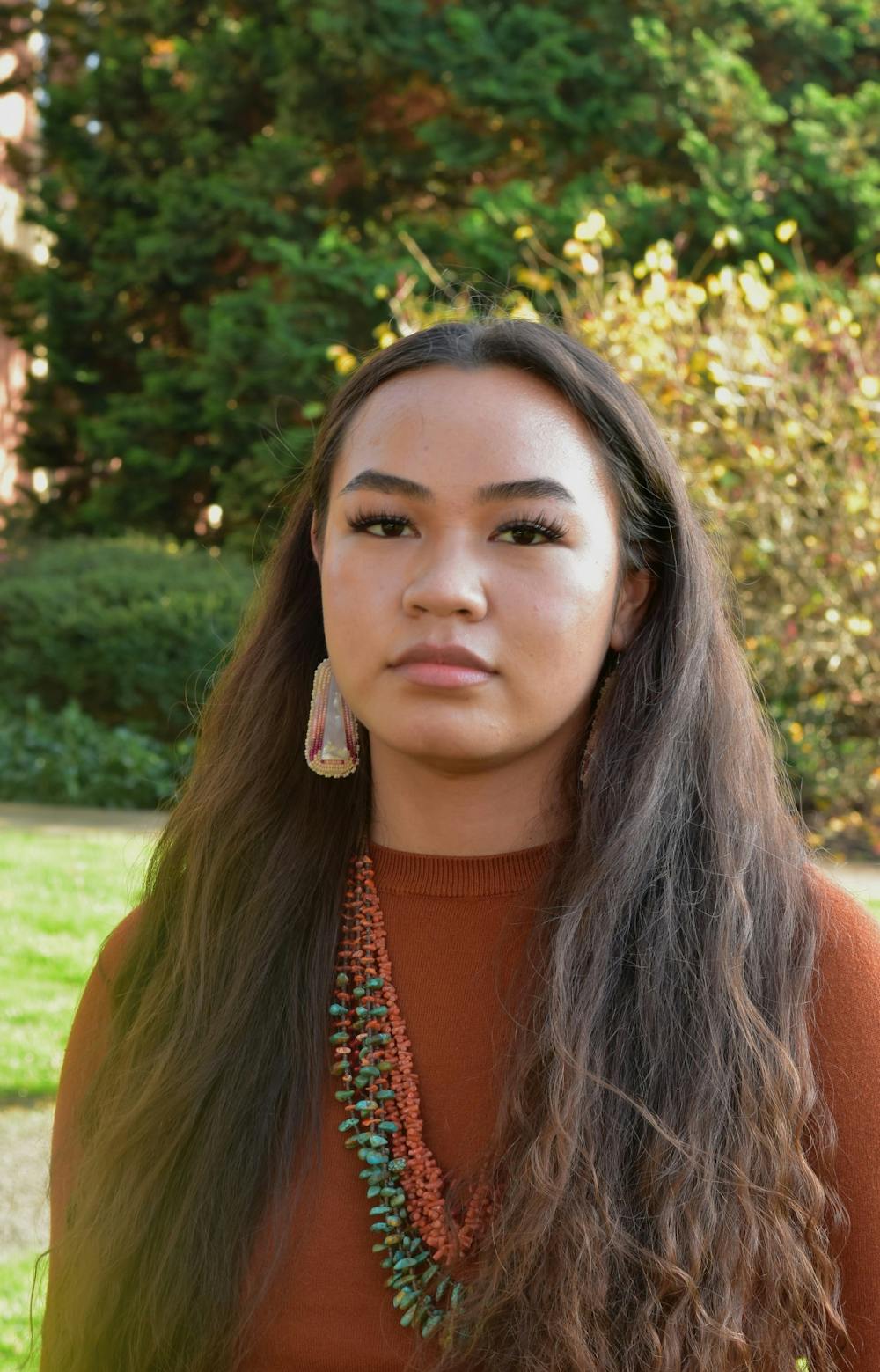
When she was young, Leano was taught that Christopher Columbus discovered America — even though she knew it wasn’t true.
“I went to a Native College Preparatory High School, and that's where I learned the actual history, and the gruesome events or that happened or battles and just everything in general,” Leano said. “And so when I hear Christopher Columbus being praised or celebrated, it just gives me an ‘ick’ feeling.”
As of 2021, what used to be referred to as “Columbus Day” is now called “Indigenous Peoples’ Day.” Due to many events of extreme suffering at the hands of white Americans since 1492, the federal government and Native Americans have had a troubled relationship, involving colonization, racism and genocide.
“Because of the systems that the federal government placed Natives in from the beginning, we were already set up to be marginalized,” Leano said. “But we're stronger because of it.”
It is important to Leano that the UP community understand that despite hundreds of years of oppression, the Native community has proven to be resilient.
“Natives voices are very powerful,” Leano said. “There still are Natives, I know there are some people who literally have been like, ‘Oh, Native Americans, I thought they were all extinct,’ – they use the word extinct.”
Mikayla Muskett
Sophomore
Business major, computer science minor
She/her/hers
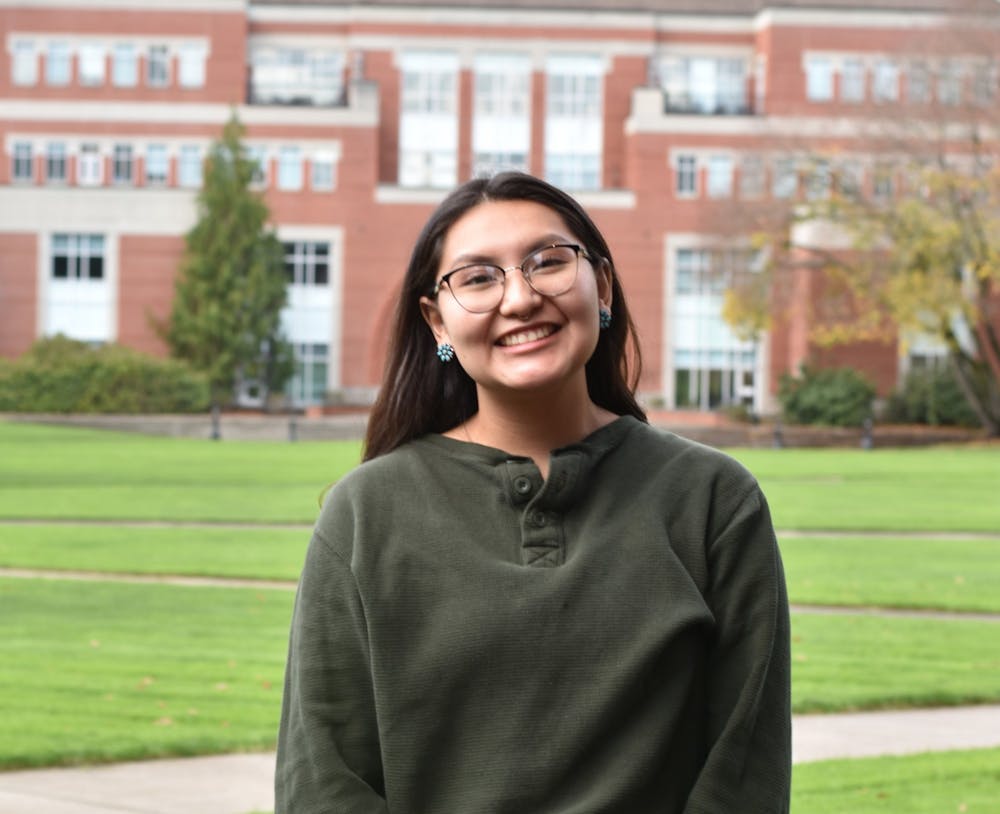
Frequently being misidentified as Hispanic or Mexican, Muskett grew up feeling like an outcast.
“I wasn't really expressive until middle school – that's when I realized and actually valued my culture,” Muskett said. “It’s a part of me and I shouldn't hold back.”
Since then, Muskett has become more connected to Navajo culture and traditions. Due to the lack of modern representation of the Native community in the media and education systems, Muskett too has felt that society doesn't value her culture.
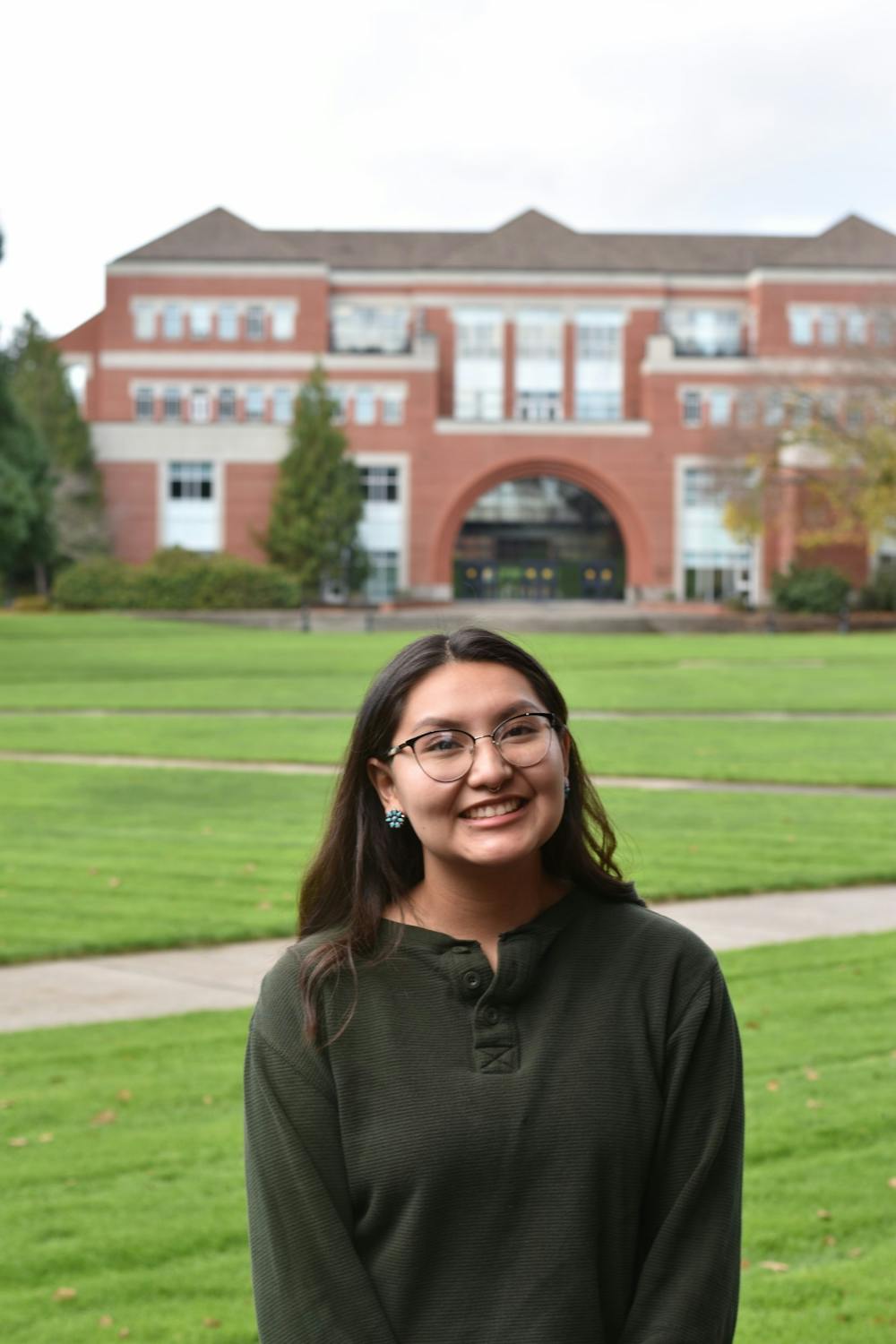
“Native Americans are still here, we’re not in teepees, we're not walking around in like deerskin clothing,” Muskett said. “We are a part of the community and we should be included in everything.”
Before Muskett moved to Portland to attend UP, she went to a private high school driven by Navajo culture and traditions. After enrolling at UP, she had to navigate the transition from being one of many Native students to being one of the few on campus.
“There's not many people here that you can actually talk to, that you can relate to,” Muskett said. “But I am grateful that we at least have a small percentage of Indigenous students that we can talk to and just come together and collaborate and just talk amongst each other in the club.”
Despite the small community, Musket is grateful for the connection to other Native students that she has formed through her participation in the Native American Alliance club on campus. Although the percentage of Native Students at UP is small, Muskett chooses to use her platform to encourage indeigenous recognition and acknowledgement.
“We’re a bit rare, because we're the smallest group in the population,” Muskett said. “We’re like diamonds.”
Kiesha DeSheuquette
Freshman
Nursing major
She/her/hers

When she was a child, Keisha DeSheuquette never had adequate representation in the media to look up to – today this is what drives her to do her part in keeping her culture alive.
“Being Native means so many things to me, I just don't know how to put it into words,” DeSheuquette said. “To me it’s just making sure that my ancestors are still being remembered. I just want to be that person that continues cultural practices and the language.”
Following a tragic history of interactions between Native American communities and the Federal Government, Natives have been fighting the position of marginalization that they were placed in hundreds of years ago.
“The government definitely tried to exterminate us, so it's just living proof that we're still here, that we still exist, and that we're still going to make an impact on the community,” DeSheuquette said. “Especially for me, I want to go into nursing because there's not a lot of representation, especially on the reservation. I want to be able to go back, and give back to my community and try to create change.”

It is important to DeSheuquette to return to the reservation she grew up on to provide care and representation to her community members.
DeSheuquette wants to use her education to create more exposure in society of Natives and work to break the stigma surrounding indigenous communities.
“I feel like Native Americans are portrayed in this really negative connotation,” DeSheuquette said. “And it's hard to see representation, but I feel like specifically this year, there's been a lot more representation in the media. So that's been super cool. I feel like there's a lot more improving to do, but it's definitely getting better.”
While the Native population in America is small, the size of the indigenous community is greatly overshined by the size of their spirit.
“We're still here, and we're still valid, we have just as much meaning as everybody else,” DeSheuquette said.
Haviland Stewart is the Living Section Editor at The Beacon. She can be reached at Stewarth22@up.edu.



